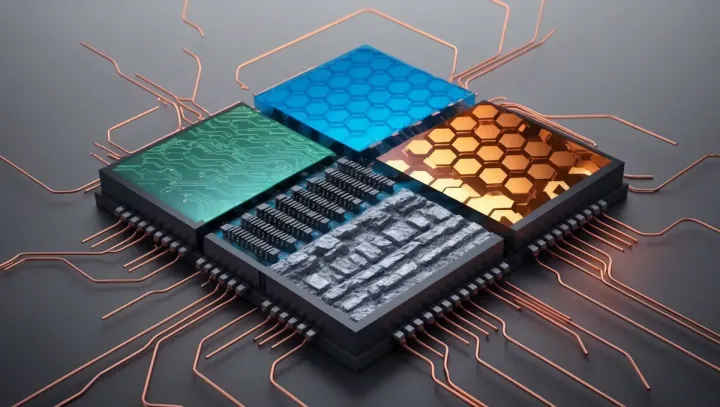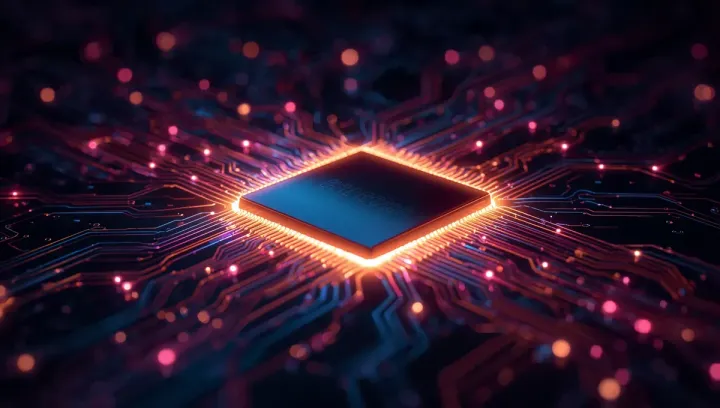The Silent Conquest: How ARM Chips Went From Your Phone to Ruling the Tech World
For decades, the digital world was built on a single foundation: x86. The architecture, dominated by Intel and AMD, was the undisputed king, powering everything from our desktop PCs to the massive server farms that run the internet. In this kingdom, ARM was seen as a minor noble, fit to rule the small, battery-powered fiefdoms of phones and tablets, but never to challenge the throne of “real” computing.
That perception was wrong. A fundamental shift was happening behind the scenes, a silent conquest that started with the device in your pocket and has now reached the highest echelons of the tech world.
The Underdog Story: A Different Philosophy
The difference between x86 and ARM isn’t just about brand names; it’s about philosophy. The x86 architecture is CISC (Complex Instruction Set Computer). Think of it as a master chef with a complex, custom multi-tool for every conceivable task. It’s powerful, but bulky and power-hungry. ARM, on the other hand, is RISC (Reduced Instruction Set Computer). This is like a sushi chef with a small set of perfectly optimized knives that perform their specific jobs with extreme efficiency.
This efficiency was ARM’s first advantage. But its real secret weapon was its business model. Unlike Intel, which designs and fabricates its own chips, ARM licenses its architecture. This masterstroke allowed companies like Apple, Amazon, and Qualcomm to take ARM’s brilliant designs and customize them, creating bespoke silicon perfectly tailored to their products. The innovation wasn’t centralized; it was explosive and decentralized.
The Turning Point: Apple Silicon
For years, the tech world watched ARM’s progress with mild interest. Then came the bombshell. In 2020, Apple, one of the largest and most influential tech companies on the planet, publicly ditched Intel and announced it was moving its entire Mac lineup to its own ARM-based chips: Apple Silicon.
The first M1 chip wasn’t just a proof of concept; it was a statement. It delivered performance that rivaled and often surpassed high-end x86 chips, all while using a fraction of the power. Laptops ran cool and quiet with battery life that seemed impossible just a year earlier. This was the moment the world woke up. ARM wasn’t just for phones anymore; it was a performance king, thanks to Apple’s tight integration of hardware and software, unified memory, and specialized cores like the Neural Engine.
The Datacenter Invasion: AWS Graviton and Ampere
While Apple was making headlines in the consumer world, a quieter but equally important revolution was happening in the cloud. Amazon Web Services (AWS), the backbone of much of the modern internet, had been developing its own custom ARM server chip, Graviton.
The value proposition was undeniable. For a datacenter running millions of servers, performance-per-watt is the holy grail. Graviton processors delivered incredible efficiency, leading to massive power savings and lower costs. This wasn’t a niche experiment; it was a direct assault on Intel’s most profitable market. Other players, like Ampere Computing (founded by former Intel executives), joined the fray, cementing ARM’s place in the cloud.
The Final Frontier: Supercomputing and The Future
The final illusion—that ARM wasn’t for serious, high-performance computing (HPC)—was shattered by supercomputers like Japan’s Fugaku. For a time, it was the most powerful supercomputer in the world, and it was built entirely on ARM architecture.
This conquest of every computing sector—from mobile to desktop to datacenter to HPC—raises the question: what’s next? The answer may be RISC-V, an open-source instruction set architecture that takes ARM’s licensing model one step further. It represents the ultimate democratization of chip design.
A New World Order
The silent conquest is now complete. The journey from a humble mobile chip to a dominant force in every corner of technology is a testament to a better philosophy and a more open business model. The era of x86’s absolute monarchy is over. The future of silicon is a diverse, multipolar world, and it is more efficient, more customized, and more exciting than ever before.

